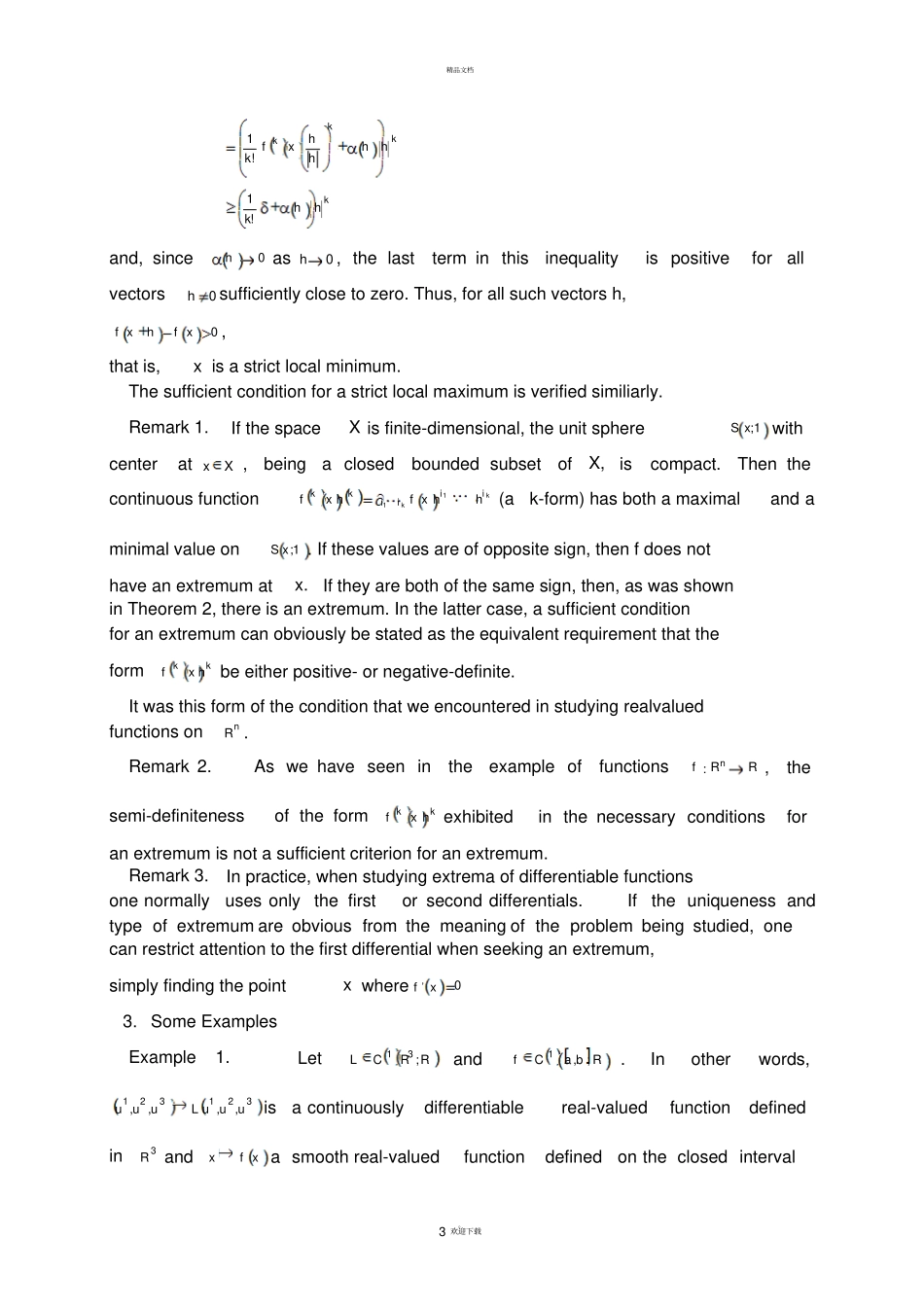精品文档。1 欢迎下载Taylor's Formula and the Study of Extrema 1. Taylor's Formula for Mappings Theorem 1. If a mapping YUf :from a neighborhood xUUof a point x in a normed space X into a normed space Y has derivatives up to order n - 1 inclusive in U and has an n-th order derivative xfnat the point x, thennnnhohxfnhxfxfhxf!1, (1) as0h. Equality (1) is one of the varieties of Taylor's formula, written here for rather general classes of mappings. Proof. We prove Taylor's formula by induction. For 1n it is true by definition of xf ,. Assume formula (1) is true for some Nn1. Then by the mean-value theorem, formula (12) of Sect. 10.5, and the induction hypothesis, we obtain. nnnnnnhohhohhxfnhxfxfhxfhxfnhfxfhxf11,,,,10!11sup!1x,as0h. We shall not take the time here to discuss other versions of Taylor's formula, which are sometimes quite useful. They were discussed earlier in detail for numerical functions. At this point we leave it to the reader to derive them (see, for example, Problem 1 below). 2. Methods of Studying Interior Extrema Using Taylor's formula, we shall exhibit necessary conditions and also sufficient conditions for an interior local extremum of real-valued functions defined on an open subset of a normed space. As we shall see, these conditions are analogous to the differential conditions already known to us for an extremum of a real-valued function of a real variable. Theorem 2. Let RUf :be a real-valued function defined on an open set U in a normed space X and having continuous derivatives up to order 11kinclusive in a neighborhood of a point Uxand a derivative xf kof order k at the point x itself. 精品文档。2 欢迎下载If 0,,01,xfxfkand 0xfk, then for x to be an extremum of...


